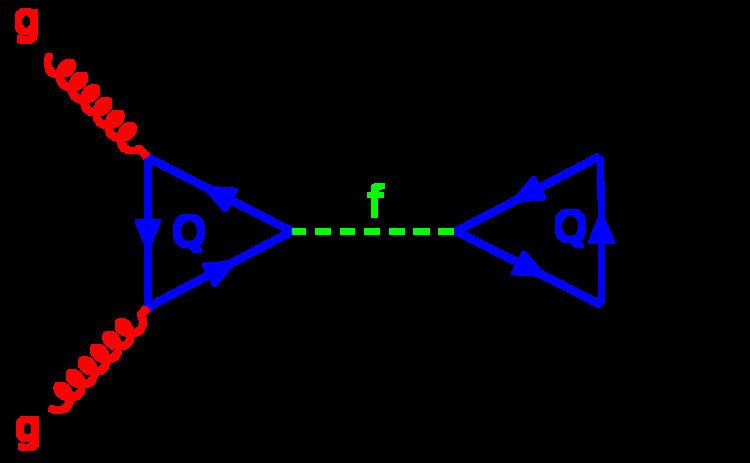Symbol Ϝ, Ϝ(750), ϕ, X,ηzy | Statistics suspected bosonic | |
 | ||
Status Refuted; absent in August 2016 data Discovered Resonance of mass ≈750 GeV decaying into two photons could have been seen by CERN in 2015 (though sufficient statistical significance never reached) Mass ≈ 750 GeV/c (CMS + ATLAS) | ||
The 750 GeV diphoton excess in particle physics was an anomaly in data collected at the Large Hadron Collider (LHC) in 2015, which could have been an indication of a new particle or resonance. The anomaly was absent in data collected in 2016, suggesting that the diphoton excess was a statistical fluctuation. In the interval between the December 2015 and August 2016 results, the anomaly generated considerable interest in the scientific community, including about 500 theoretical studies. The hypothetical particle was denoted by the Greek letter Ϝ (pronounced digamma) in the scientific literature, owing to the decay channel in which the anomaly occurred. The data, however, were always less than five standard deviations (sigma) different from that expected if there was no new particle, and, as such, the anomaly never reached the accepted level of statistical significance required to announce a discovery in particle physics. After the August 2016 results, interest in the anomaly sank as it was considered a statistical fluctuation.
Contents
December 2015 data
On December 15, 2015, the ATLAS and CMS collaborations at CERN presented results from the second operational run of the Large Hadron Collider (LHC) at the center of mass energy of 13 TeV, the highest ever achieved in proton-proton collisions. Among the results, the invariant mass distribution of pairs of high-energy photons produced in the collisions showed an excess of events compared to the Standard Model prediction at around 750 GeV/c2. The statistical significance of the deviation was reported to be 3.9 and 3.4 standard deviations (locally) respectively for each experiment.
The excess could have been explained by the production of a new particle (the digamma) with a mass of about 750 GeV/c2 that decayed into two photons. The cross-section at 13 TeV centre of mass energy required to explain the excess, multiplied by the branching fraction into two photons, was estimated to be
(fb=femtobarns)
This result, while unexpected, was compatible with previous experiments, and in particular with the LHC measurements at a lower centre of mass energy of 8 TeV.
August 2016 data
Analysis of a larger sample of data, collected by ATLAS and CMS in the first half 2016, did not confirm the existence of the Ϝ particle, which indicates that the excess seen in 2015 was a statistical fluctuation.
